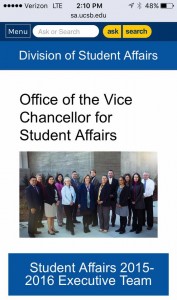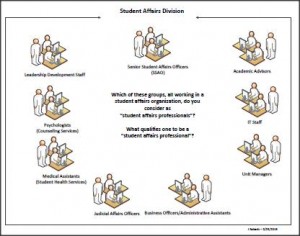 Setting big dreams is fun, isn’t it? My wife and I commute to work together, and there are days when we discuss all the possibilities ahead of us. We figure it doesn’t cost us anything, and if we’re going to dream anyway, we’ll dream big beyond our imaginations and realities as we see them now.
Setting big dreams is fun, isn’t it? My wife and I commute to work together, and there are days when we discuss all the possibilities ahead of us. We figure it doesn’t cost us anything, and if we’re going to dream anyway, we’ll dream big beyond our imaginations and realities as we see them now.
Personally, the last few months have proven to be fruitful so far. Some of what I consider Big Hairy Audacious Goals (BHAG) have come/or are in the process of becoming realities. BHAG is a term I came across from the book called “Built To Last: Successful Habits of Visionary Companies” by Jim Collins. The idea behind BHAG in this book is that visionary companies used bold and daunting missions to stimulate progress. I just recently read the book, so I didn’t know this term even existed, but it seems the goals I had set for myself would qualify as BHAGs. They may not be audacious goals for other folks, but these goals certainly are for me.
These personal BHAGs may not have been in the form I originally envisioned them, but they’re close to what I had in mind. In addition, some of these goals are personally scary for me. I figured I would have to conquer my fears as I encountered them. Another important note – these goals needed the help of other folks to make them happen! They would have never happened without folks who believed in me and the ideas themselves.
Here are some of my BHAGs that have become realities:
 A seat at the Senior Student Affairs Officers (SSAO) table in my role as IT Director. I became a member of my campus’ Student Affairs Executive Team in December. In this blog post, Case for Technology Leadership at the SSAO Table, I wrote about the value of having someone in a senior technology management role at the table who can bring technical expertise and perspective as strategic decisions are made.
A seat at the Senior Student Affairs Officers (SSAO) table in my role as IT Director. I became a member of my campus’ Student Affairs Executive Team in December. In this blog post, Case for Technology Leadership at the SSAO Table, I wrote about the value of having someone in a senior technology management role at the table who can bring technical expertise and perspective as strategic decisions are made.
A campus-wide IT leadership/management professional development program. With the support of our new CIO, Matt Hall, we have begun planning for a campus-wide program to promote community-building, leadership/mgmt, and technical training for IT professionals. Along with our CIO, we have a team consisting of IT Directors as well as HR managers that’s in the process of formulating our goals and program activities. This is an idea I proposed in this blog post – Cohort-Based IT Leadership Program for Higher Education.
NASPA Technology Knowledge Community (TKC) Chair. This is a position that seemed out of reach for me and one that I may not be qualified for, given the significance and scope of the TKC. However, as mentioned in this post (Sharing Our Vision at #NASPA16: Updates from the TKC Chair), I think I can contribute to advancing technology in student affairs by broadening the scope of conversation and those involved in the discussions through the chair position. With the help of an amazing team, the community members, and the current chair, Lisa Endersby, I can’t wait to see what we’ll do in the next couple of years!
A webcast on student affairs and technology. A couple of weeks ago, the opportunity to do a webcast finally happened with the webcast “What AVPS and Mid-Level Professionals Need to Know About Technology” with Eric Stoller and Stephanie Gordon. It was a challenge for me, given that I am not always sure of how much I know about the topic and how I may come across on a live discussion when folks are watching from all places.
 Lose 45 pounds in 10 months. Never in my wildest dream would I ever think I’d accomplish this. After all, I’ve tried in the past to lose weight, but for various reasons, I just couldn’t make it happen. Here is a blog post, How I lost 20 Pounds in 3 Months, of what I found to work (written three months after I started the weight loss attempt).
Lose 45 pounds in 10 months. Never in my wildest dream would I ever think I’d accomplish this. After all, I’ve tried in the past to lose weight, but for various reasons, I just couldn’t make it happen. Here is a blog post, How I lost 20 Pounds in 3 Months, of what I found to work (written three months after I started the weight loss attempt).
As I had mentioned, my wife and I have a list of BHAGs, and those shall remain a secret to us, and who knows if they’ll ever come to fruition. It is fun, though, to work towards them and to think about the possibilities. Professionally, I see the next three years as potentially significant for me. With a mixture of luck, preparation, and the help of many folks, I hope they’ll happen.
What are your BHAGs?
Photo of goldfish with shark fin courtesy of: https://pbs.twimg.com/media/CZwxYtFWwAIclAj.jpg

